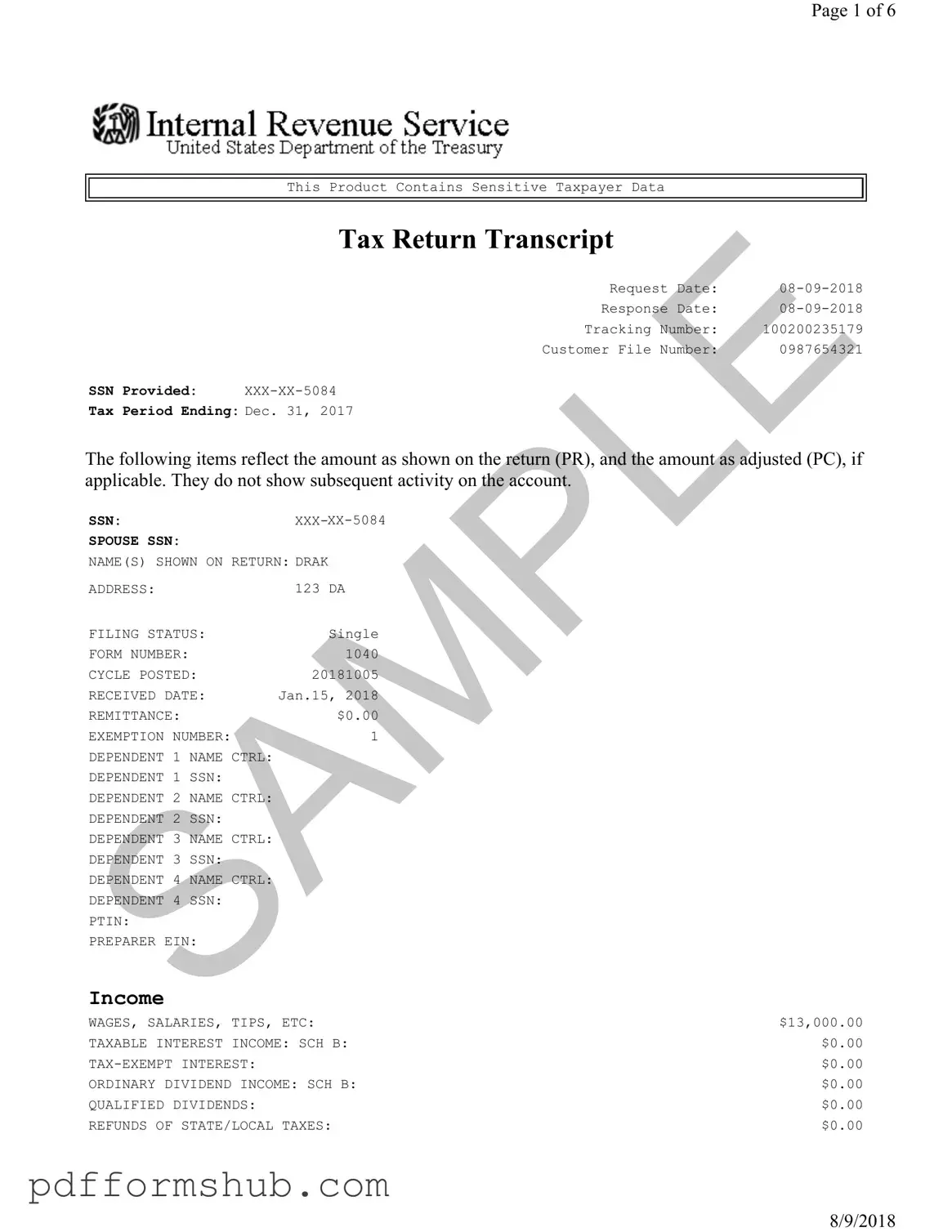The Sample Tax Return Transcript form serves as a crucial document for individuals navigating the complexities of their tax obligations. This form provides a snapshot of a taxpayer's financial situation as reported to the IRS, encompassing key details such as income, deductions, and credits for a specific tax period. For instance, it includes information like wages, business income, and various adjustments that contribute to the calculation of adjusted gross income. Additionally, the form outlines tax liabilities, payments made, and any refunds owed, allowing taxpayers to understand their overall tax standing. Notably, it also contains sensitive data, such as Social Security numbers and personal identifiers, emphasizing the importance of safeguarding this information. By examining the Sample Tax Return Transcript, individuals can gain insights into their tax history, which can be particularly beneficial when applying for loans or financial aid, or when resolving disputes with the IRS. Understanding this form can empower taxpayers to make informed decisions regarding their financial and tax planning strategies.
